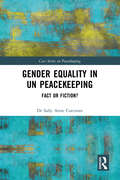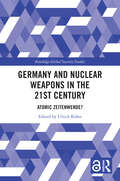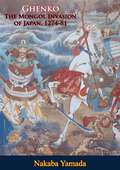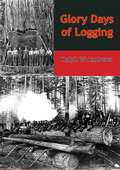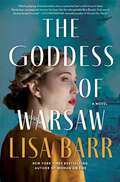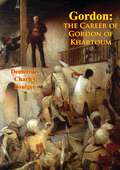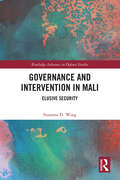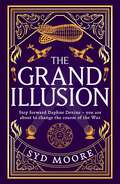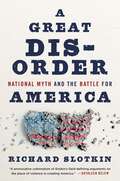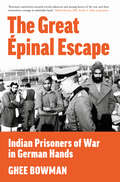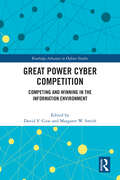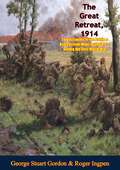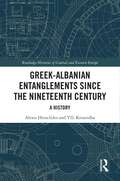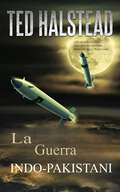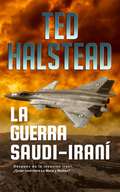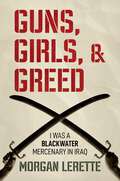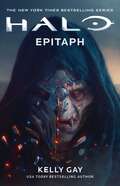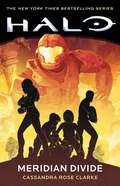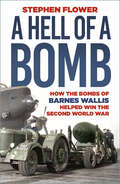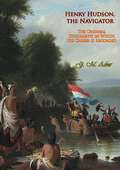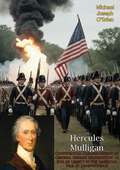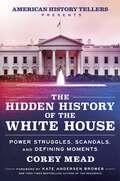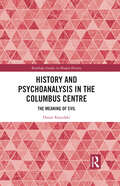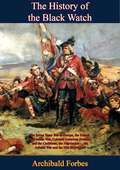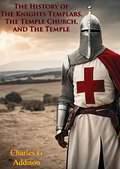- Table View
- List View
Gender Equality in UN Peacekeeping: Fact or Fiction? (ISSN)
by Sally Anne CorcoranThis book investigates to what extent UNSCR 1325/WPS agenda has functioned in practice, to advance women’s equality and empowerment in the peacekeeping context and beyond.The book examines whether widespread implementation of UNSCR 1325 and the broader WPS agenda via gender mainstreaming in UN operations has translated into increased gender equality in peacekeeping operations, the broader UN institutional context and, by extension, the host countries in which missions are situated, via norm dissemination. The book investigates this via a review of the implementation of UNSCR1325 in the operations chosen as research sites over three snapshot years. The book undertakes a comparative analysis that scrutinizes if, how and under what conditions gender mainstreaming has succeeded as a strategy to advance gender equality by analyzing the factors/conditions that have led to successful gender mainstreaming across the operational context, and those that have impeded this outcome. The book concludes that, despite rhetorical commitments to women’s equality in peacekeeping since the passage of UNSCR 1325, progress on the ground has remained minimal, and that the operational environment continues to be discriminatory against women. Both quantitatively and qualitatively, women do not participate as equal partners in peacekeeping and continue to have less access to resources and decision-making power, overall. The book interrogates that by exploring the spaces available within law, policy and practice of the UN to pursue the human rights agenda of gender equality and considers whether UNSCR 1325 has enlarged those spaces. It also points to the irony of internal UN structures failing to adequately adapt to their own gender mainstreaming mandates, while those same structures have delivered some gender equality mandates successes externally, at local levels.This book will be of interest to students of peacekeeping, gender studies, and International Relations.
Germany and Nuclear Weapons in the 21st Century: Atomic Zeitenwende? (Routledge Global Security Studies)
by Ulrich KühnThis book is the first scholarly book to take a comprehensive look at Germany’s nuclear weapons policies in the 21st century.German foreign and security policy is facing a profound reorientation. Great power competition between the United States and both a revanchist Russia and a rising China, the return of war and nuclear threats to Europe, and the emergence of new technologies all force Germany to adapt. German policymakers and scholars increasingly speak of a pivotal Zeitenwende, an epochal turning point in history. How does Germany adapt its nuclear policies to these changing conditions?The volume brings together internationally renowned nuclear scholars and policy analysts from Germany and abroad. Focussing on German nuclear deterrence, arms control and disarmament as well as nonproliferation policies, the contributors assess how German leaders have navigated continuity and change, domestically and abroad. The volume concludes that Germany remains bound by dependence on the United States and its own conservatism. Within these parameters, German leaders have adapted slowly to change and continue to balance seemingly contradictory deterrence and disarmament goals.This book will be of much interest to students of nuclear proliferation, security studies, German politics and International Relations, as well as policymakers.
Ghenko: The Mongol Invasion of Japan, 1274-81
by Nakaba Yamada“A ferocious conflict between Mongol and Samurai.The Japanese word 'Ghenko' is the term employed for the Mongol invasion of Japan. The event was an immensely significant one for the Japanese and it remained so for centuries because, in part, the defeat of the invaders was attributed to divine intervention. There can be little doubt that Japan's salvation had much to do with the fact that they are an island race and in that they have much in common with other islanders, Great Britain among them, who on more than one occasion might claim the sea as their principal and most powerful ally. Indeed, the author of this book draws parallels with Britain and the Spanish Armada. The Mongols had rapidly risen to power during the 13th century and had created an unstoppable empire that spread over huge areas of land from the Yellow Sea of Asia to the Danube in Europe. Although massively stronger than the Japanese, the Mongols attacked the Japanese islands, attempting domination by invasion and yet were repulsed with finality. To modern students of military history the contents of this book has a compelling allure, since there can be no doubt that in the Mongol warrior and the Japanese Samurai there resided a martial spirit and expertise which, perhaps inevitably, could not both exist in the same sphere, but which in collision could not fail to instigate conflict of the most singular kind. This account of the clash between the ultimate warriors of their day analyses this time of warfare in superb detail. An essential addition to the library of anyone interested in the warfare of the East.”-Print ed.
Glory Days of Logging
by Ralph W Andrews"Glory Days of Logging" by Ralph W. Andrews is a fascinating visual and historical journey into the heyday of the logging industry in the Pacific Northwest. First published in 1956, this book captures the spirit and grit of the loggers and lumberjacks who played a crucial role in shaping the American frontier.Andrews' narrative is rich with anecdotes and detailed accounts of the logging operations, from the felling of giant trees to the transportation of massive logs using steam donkeys, locomotives, and river drives. He delves into the daily lives of the loggers, exploring their camaraderie, hardships, and the dangerous, often heroic, nature of their work. The book also highlights the technological advancements and innovations that revolutionized the industry.The heart of "Glory Days of Logging" lies in its striking photographs. Andrews' carefully curated images provide a vivid visual record of the era, showcasing towering timber, sprawling logging camps, and the powerful machines that made large-scale logging possible. These photographs, combined with Andrews' informative captions and engaging prose, offer a comprehensive and immersive experience."Glory Days of Logging" is more than just a historical account; it is a tribute to the resilience and ingenuity of the logging communities. Andrews' work stands as an essential resource for anyone interested in the history of American industry, the development of the Pacific Northwest, or the enduring legacy of the logging profession.Whether you are a history buff, a photography enthusiast, or someone with a general interest in America's industrial past, "Glory Days of Logging" offers a captivating and informative read that brings a bygone era to life with authenticity and respect.
The Goddess of Warsaw: A Novel
by Lisa Barr“Utterly gripping, The Goddess of Warsaw is a transformative and immersive story so powerful and captivating that I could not put it down. Rarely does a protagonist leap off the page and win over the heart like the unforgettable Bina Blonski. Truly one of the best books I’ve read.”—Liv Constantine, bestselling author of The Last Mrs. Parrish“Lisa Barr's new historical fiction, The Goddess of Warsaw, gifts the reader with jaw-dropping moments worthy of a Tarantino film, a story that could not be more timely, and a heroine whose ferocity and valor knows no bounds. Bina Blonski is forced to lose and remake her identity time and time again, both to survive the Warsaw Ghetto and to carry out her secret mission years later as a Hollywood actress. Unrelentingly immersive and suspenseful to the very end, The Goddess of Warsaw spins a haunting tale of the cost of survival, sacrifice, and the long-denied secrets of the past.”—Natalie Jenner, author of the instant international bestseller The Jane Austen SocietyThe Goddess Of Warsaw is an enthralling tale of a legendary Hollywood screen goddess with a dark secret about her life in the Warsaw Ghetto. When the famous actress is threatened by someone from her past, she must put her skills into play to protect herself, her illustrious career, and those she loves, then and now. Los Angeles, 2005. Sienna Hayes, Hollywood’s latest It Girl, has ambitions to work behind the camera. When she meets Lena Browning, the enormously mysterious and famous Golden Age movie star, Sienna sees her big break. She wants to direct a picture about Lena’s life—but the legendary actor’s murky past turns out to be even darker than Sienna dreamed. Before she was a Living Legend, Lena Browning was Bina Blonski, a Polish Jew whose life and family were destroyed by the Nazis.Warsaw, 1943. A member of the city’s Jewish elite, Bina Blonski and her husband, Jakub, are imprisoned in the ghastly, cramped ghetto along with the rest of Warsaw’s surviving Jews. Determined to fight back against the brutal Nazis, the beautiful, blonde Aryan-looking Bina becomes a spy, gaining information and stealing weapons outside the ghetto to protect her fellow Jews. But her dangerous circumstances grow complicated when she falls in love with Aleksander, an ally in resistance—and Jakub’s brother. While Lena accomplishes amazing feats of bravery, she sacrifices much in the process.Over a decade after escaping the horrors of the ghetto, Bina, now known as Lena, rises to fame in Hollywood. Yet she cannot help but be reminded of her old life and hungers for revenge against the Nazis who escaped justice after the war. Her power and fame as a movie star offer Lena the chance to right the past’s wrongs . . . and perhaps even find the happy ending she never had.A gripping page-turner of one of history’s most heroic uprisings and an actress whose personal war never ends, The Goddess Of Warsaw is filled with secrets, lies, twists and turns, and a burning pursuit of justice no matter the cost.
Gordon: the Career of Gordon of Khartoum
by Demetrius Charles Boulger“A great British soldierThis is the biography of one of the most famous soldiers of the Victorian age—Major-General Charles Gordon. Certainly he is now known as Gordon of Khartoum, but highly regarded in his own lifetime, he was to many also Chinese Gordon and Gordon Pasha. Commissioned as a Royal Engineer, Gordon first saw action during the Crimean War taking part in the siege of Sebastopol, the assault on the Redan and the expedition to Kinburn. In 1860 the Second Opium War broke out in China and it was here and during the Taiping Rebellion that Gordon earned his reputation and the recognition that set him towards high military rank. But it was Africa where he achieved his greatest fame. Gordon was engaged in much vital and interesting service before he found himself behind the walls of Khartoum in an unequal struggle against the religious fervour of the Mahdist forces. This is a thorough account of the man and his times which will be of great interest to those who wish to learn more about Gordon than just his martyrdom in the Sudan.”-Print ed.
Governance and Intervention in Mali: Elusive Security (Routledge Advances in Defence Studies)
by Susanna D. WingThis book provides the historical and political context for the security interventions in Mali over the past three decades.The work contextualizes external military engagement (including that of the United States, France, the United Nations and G5 Sahel) within the broader framework of weak democratic consolidation, unmet development goals and increasing popular perceptions of widespread corruption in Mali. Over the past three decades, there have been four military coups in Mali: the military coup in 1991 launched the Third Republic; the 2012 coup toppled elected President Touré; the 2020 coup overthrew the elected President Keita; and the coup within a coup that ousted transitional President Bah. Given the political context, how do multiple international interventions relate to insecurity and instability in the country? Drawing on the author’s thirty years of research on Mali, this work examines the relationship between external intervention in the country, domestic actors, and decentralization policies. The book argues that external support has ignored the poor governance that is at the heart of the country’s crises.This book will be of much interest to students of intervention and statebuilding, African politics and International Relations in general.
The Grand Illusion (Section W)
by Syd MooreHistorical fiction inspired by the War Office response to the Nazi obsession with the occultStep forward Daphne Devine - you are about to change the course of the war &‘A breathtaking historical thriller.&’ Erin Kelly, author of The Skeleton Key June 1940. As World War Two rages, Daphne Devine remains in London, performing each night as assistant to stage magician Jonty Trevelyan, aka the Grand Mystique. Then the secret service call. For, aware of Hitler&’s belief in the occult, the war office has set up a hidden cohort to exploit this quirk in the enemy&’s chain of command. Daphne and Jonty find themselves far from the glitz and glamour of the theatre, deep inside the lower levels of Wormwood Scrubs prison. Here, they join secret ranks of occultists, surrealists, and other eccentrics co-opted to the war effort. There is one goal: to avert invasion on British shores. Soon Daphne realises she must risk everything if there is any chance of saving her country 'Quirky, clever and compelling.' Anna Mazzola, author of The Clockwork Girl 'A rattling good read.' Barbara Nadel, author of Belshazzar's Daughter
A Great Disorder: National Myth and the Battle for America
by Richard SlotkinAs culture wars pit us against each other, A Great Disorder looks to the myths that have shaped American identity and reveals how they have brought us to the brink of an existential crisis.Red America and Blue America are so divided they could be two different countries, with wildly diverging views of why government exists and who counts as American. Their ideologies are grounded in different versions of American history, endorsing irreconcilable visions of patriotism and national identity.A Great Disorder is a bold, urgent work that helps us make sense of today’s culture wars through a brilliant reconsideration of America’s foundational myths and their use in contemporary politics. Famous for his trilogy on the Myth of the Frontier, Richard Slotkin identifies five myths, born of different eras, that have shaped our conception of what it means to be American: the myths of the Frontier, the Founding, the Civil War (which he breaks into two opposing camps, Emancipation and the Lost Cause), and the Good War, embodied by the multiethnic platoon fighting for freedom. His argument is that while Trump and his MAGA followers have played up a frontier-inspired hostility to the federal government and rallied around Confederate symbols to champion a racially exclusive definition of American nationality, Blue America, taking its cue from the protest movements of the 1960s, envisions a limitlessly pluralistic country in which the federal government is the ultimate enforcer of rights and opportunities. American history—and the foundations of our democracy—have become a battleground. It is not clear at this time which vision will prevail.
The Great Épinal Escape: Indian Prisoners of War in German Hands
by Ghee BowmanOn 11 May 1944 – just four weeks before D-Day – 67 American heavy bombers dropped 168 tons of bombs on the sunlit French town of Épinal on the Moselle river. Unbeknownst to the aircrew of the ‘Mighty Eighth’, this was the temporary home of over 3,000 Indian prisoners of war, brought there by the occupying Germans a few months before, from camps across the Third Reich.The bombs pierced the camp wall in places, and the prisoners – many of whom had made escape attempts previously – grabbed food and clothes and headed off, dodging German bullets. They knew that the Swiss frontier was just 100 kilometres away to the south, and that, if they could cross the border, they would be safe. Having been inside for up to four years, they were eager to get home.For the next few weeks, the fields, mountains and forests of eastern France became the hiding place for hundreds of Hindus, Sikhs, Muslims and Gurkhas. By the end of June, a staggering figure of 500 had arrived and were being housed in camps in northern Switzerland by a nation with long experience of looking after those escaping from conflict.This was the largest successful escape of the Second World War.All of this took place just six weeks after the famous ‘Great Escape’ from Stalag Luft III. In that escape, 76 men got out, 50 were shot by the Gestapo, and just three (two Norwegians and a Dutchman) made it back to Britain. In contrast, the 500 Indian POWs who escaped from Epinal in that same season are completely unknown. No film has been made, no book written of this astonishing feat.Tracing the paths of 8 individuals who were at Epinal, this book tells the incredible true story of those 500 and the greatest escape of the Second World War.
Great Power Cyber Competition: Competing and Winning in the Information Environment (Routledge Advances in Defence Studies)
by David V. Gioe Margaret W. SmithThis volume conceptualizes the threats, challenges, opportunities, and boundaries of great power cyber competition of the 21st century. This book focuses on a key dimension of contemporary great power competition that is often less understood due to its intangible character: the competition taking place in the cyber domain, including information and cyber operations. Democracies across the globe find themselves in an unrelenting competition with peer and near-peer competitors, with a prevailing notion that no state is "safe" from the informational contest. Adversarial powers, particularly China and Russia, recognize that most competition is principally non-kinetic but dominates the information environment and cyberspace, and the volume articulates the Russian and Chinese strategies to elevate cyber and information competition to a central position. Western governments and, in particular, the U.S. government have long conceived of a war–peace duality, but that perspective is giving way to a more nuanced perception of competition. This volume goes beyond analyzing the problems prevalent in the information space and offers a roadmap for Western powers to compete in and protect the global information environment from malicious actors. Its genesis is rooted in the proposition that it is time for the West to push back against aggression and that it needs a relevant framework and tools to do so. The book demonstrates that Western democratic states currently lack both the strategic and intellectual acumen to compete and win in the information and cyber domains, and argues that the West needs a strategy to compete with near-peer powers in information and cyber warfare. This book will be of much interest to students of cyber-warfare, information warfare, defense studies, and international relations in general, as well as practitioners.
The Great Retreat, 1914: During the First World War [Illustrated Edition]
by George Stuart Gordon Roger IngpenIncludes The First World War On The Western Front 1914-1915 Illustrations Pack with 101 maps, plans, and photos.“Two views of the Great RetreatImperial Germany had long planned the conflict that was to become the First World War, but when the onslaught came there was little sign that the nations which would be embroiled were prepared for the storm. Germany advanced in the east and west where French and Belgian armies were forced to retire by overwhelming odds. The small British Army, the 'B. E. F', was rushed to the continent with most of its troops having less than a week between garrison life and the firing line. Under Sir John French, it was allocated the western end of the line, and at Mons it inflicted far more causalities on the enemy than its numbers would suggest. No army of its size, however, could stand against the German superiority in men (at least five to one) or artillery and machine guns. An envelopment was inevitable and so a stubbornly fought retreat was ordered. Near Le Cateau, the British turned at bay and Smith-Dorrien's determination to stand and fight undoubtedly saved the British Army from annihilation. Many people imagine the First World War as a stalemate of mud, wire and trenches, but in the first six months it was a great European war fought in much the same way that Napoleon, Wellington and Blucher had fought a century before.”-Print ed.
Greek-Albanian Entanglements since the Nineteenth Century: A History (Routledge Histories of Central and Eastern Europe)
by Alexis Heraclides Ylli KromidhaThis book is a comprehensive study of more than 200 years of the shared and interconnected histories of Greek-Albanian relations, a field of inquiry that has not attracted the international scholarly attention it deserves. The book presents and analyses in detail topics including the contested borderland (1800–1912), the Greek Revolution (1821–1830) and Greek-Albanian entanglements during it, Greek nationalism (identity and narrative), the Albanians (pre-modernism, belated nationalism, origin), the rise of Albanian nationalism, Albanian national identity and historical narrative, Greek-Albanian relations from the League of Prizren (1878) until Albania’s declaration of independence (1912), Greek irredentism (the "Northern Epirus Question", 1912–1920) and Albania’s precarious independence, Greek irredentism and Greek-Albanian relations (the "Northern Epirus Question", 1940–1971), the Greek minority in Albania, the Cham (Muslim Albanian) issue, the turbulent first part of the 1990s, the pending Greek-Albanian issues, and public opinion. It concludes with a road map for an eventual Albanian-Greek reconciliation. This volume will interest scholars and students of Southeastern Europe (Balkans), international and political history, political science and sociology. It will also be a valuable resource for diplomats, journalists, think tanks and other organizations and institutions involved in Greek-Albanian relations.
La Guerra Indo-Pakistani: Los Agentes Rusos: Libro 7 (Los Agentes Rusos #7)
by Ted HalsteadDescripción del libro: Rusia se ha enterado de que el robo de dos misiles nucleares tácticos paquistaníes se utilizará para provocar una guerra nuclear entre India y Pakistán. Eso es un problema. Porque la invasión rusa de Ucrania la ha dejado con sólo dos amigos entre los países líderes del mundo. China e India. Y Rusia ha hecho promesas secretas de respaldar a ambos en una guerra nuclear. ¿Podrán los agentes rusos, ayudados por una de las pocas mujeres agentes de la India, impedir una guerra nuclear en el subcontinente? ¿O el conflicto crecerá hasta incluir a Rusia y China, y finalmente comenzará la Tercera Guerra Mundial? “Nunca me pierdo uno de los libros de Ted. Historias muy divertidas. Esta es simplemente una serie de primera clase, excelente escritura. Muy recomendable."
La guerra Saudi-Iraní: Los Agentes Rusos: Libro 2 (Los Agentes Rusos #2)
by Ted Halstead¿Podrán los agentes rusos, los tanques saudíes y la tecnología estadounidense detener a tiempo al Líder Supremo de Irán? El nuevo gobernante de Irán utilizará tres armas nucleares, VX y dos fuerzas blindadas que se dirigen hacia Riad para derrocar a la monarquía saudí. ¿Podrán detenerlo antes de que mueran miles de personas y comience una guerra más amplia en Oriente Próximo? A los aficionados a la ficción militar les encantarán las detalladas descripciones de tanques, drones y ojivas. Pero los aficionados al thriller político disfrutarán con el ritmo y la historia. Se lee como una novela de Tom Clancy, en el sentido de que hay numerosos personajes y muchas partes en movimiento. Sin embargo, a diferencia de Clancy, no hay tramas secundarias que se desvíen. Todas las personas y acontecimientos descritos en el libro conducen directamente a la trama principal, lo que hace que sea una lectura bastante rápida y concisa. Recomiendo encarecidamente este libro, especialmente si sientes curiosidad por la ficción militar.
Guns, Girls, and Greed: I Was a Blackwater Mercenary in Iraq
by Morgan LeretteGuns, Girls, and Greed is an unvarnished, behind-the-scenes, tell-all account of the scathing and dangerous life of mercenaries at war in Iraq.Experience the world of private contractors conducting high-threat missions for a nascent Iraqi government in the hopes of rebuilding after the fall of Saddam Hussein. With limited support, the men of Blackwater protected US diplomats as the country descended into sectarian violence. It was a hazardous mission complete with rockets, mortars, improvised explosive devices, and not knowing who or where the enemy was. Morgan Lerette&’s irreverently honest memoir shows the good and bad of injecting private armies into active combat zones in the name of diplomacy and digs deep into the bonds of brotherhood created by war. With gut-wrenching tragedy, dark humor, and parties that make Animal House seem like a Disney film, this memoir offers a firsthand perspective on how men act and react in war. Lerette, a private contractor employed by the notorious Blackwater in the early days of the Iraq War, pulls no punches in calling out the incompetence of both the US military and the Department of State during the collapse of Iraq. You can decide if the insertion of private contractors in Iraq assisted or detracted from the war effort and if the costs in blood and treasure were worth the carnage.
Halo: Epitaph (Halo #32)
by Kelly GayAn original novel set in the Halo universe—based on the New York Times bestselling video game series!Stripped of armor, might, and memory, the legendary Forerunner warrior known as the Didact was torn from the physical world following his destructive confrontation with the Master Chief and sent reeling into the mysterious depths of a seemingly endless desert wasteland. This once powerful and terrifying figure is now a shadow of his former self—gaunt, broken, desiccated, and alone. But this wasteland is not as barren as it seems. A blue light glints from a thin spire in the far distance… Thus begins the Didact&’s great journey—the final fate of one of the galaxy&’s most enigmatic and pivotal figures.
Halo: Meridian Divide (Halo #2)
by Cassandra Rose ClarkeDiscover the original novel set in the Halo universe, based on the New York Times bestselling video game series!It&’s been three months since the colony world of Meridian was invaded by the alien theocratic alliance known as the Covenant. Under the close watch of the military, teenagers Evie, Dorian, Saskia, and Victor have been put into an accelerated training program with ONI, the Office of Naval Intelligence. And to the quartet&’s surprise, ONI has a mission for them: return to their hometown on Meridian and monitor the Covenant&’s efforts to retrieve an ancient Forerunner artifact of untold power. But what seems like a simple job quickly spirals out of their control. With the artifact at risk of falling into Covenant hands, the stakes are raised, and ONI tasks the teens and their team of militia fighters with extracting the artifact for study. After a series of missteps with command, the group must take matters into their own hand, journeying far behind enemy lines and into the heart of the war zones on a ravaged Meridian.
A Hell of a Bomb: How the Bombs of Barnes Wallis Helped Win the Second World War
by Stephen FlowerOne of the most famous and spectacular events of the Second World War was the destruction of two dams in the Ruhr by Avro Lancaster bombers of 617 Squadron, known ever since as the Dambusters Raid. The bombs that the Lancasters dropped were designed by the most prolific inventor of armaments of the period. His Tallboy and Grand Slam earthquake bombs helped destroy the battleship Tirpitz as well as numerous other high-profile targets, and were only eclipsed in destructive power by the atom bombs dropped on Japan.The inventor was Barnes Wallis and A Hell of a Bomb is the story of the development of his bombs, their destructive uses and how they helped win the war for the Allies.
Henry Hudson, the Navigator: The Original Documents in Which His Career Is Recorded
by G. M. Asher“Four centuries ago, English explorer Henry Hudson (1570-1611), commanding the yacht ‘Halve Maen’ for the Dutch East India Company, sailed into a New World tidal estuary near the landmass the local Lenape Indians called the "island of many hills." The island was Manhattan, and though Hudson was unlikely the first European to see the river, it has been forever after that known by his name. This classic 1860 work collects the eyewitness documentation of Hudson's voyages of exploration, edited, partially translated, and annotated by GEORG MICHAEL ASHER (d. 1905). This invaluable volume of historical accounts includes abstracts of Hudson's own journals, reports by other sailors under Hudson's command, extracts from commentary by Hudson's contemporaries, and much more. The best record we have of Henry Hudson's achievements, this replica volume will be prized by fans of firsthand history.”-Print ed.
Hercules Mulligan: A Son of Liberty in the American War of Independence
by Michael Joseph O'BrienHercules Mulligan was a master spy who answered to George Washington, being instrumental to saving the revolutionary leader from capture during the War of Independence.The young Mulligan grew up at a time when agitation over Britain’s taxation of the American colonies was rising; born in Ireland, he moved to the colonies at the age of six, and considered himself not merely a colonist, but a patriot of the impending nation. Able with dialogue and persuasion, it was Mulligan who convinced the young Alexander Hamilton to join the patriotic movement for independence.During the War of Independence, Mulligan continued to work as a tailor in New York. Such work was ideal for knowledge gathering; many of the British officers would attend his shop, and from the dates they wished to collect their new or updated uniforms, Mulligan was able to pass along information about the deployment of certain regiments. A fortunate visit late one night by a British officer demanding service yielded vital knowledge of a daring plot to ambush and capture George Washington: by informing the revolutionary leader ahead of time, General Washington’s capture was averted.Mulligan is often termed an ‘unsung hero’, as his deeds—crucial to the war effort—have faded from memory over time. This biography not only tells of Mulligan’s importance, but includes in the appendix the man’s own written narrative upon his deeds.-Print ed.
The Hidden History of the White House: Power Struggles, Scandals, and Defining Moments
by Corey MeadPresented by the hit podcast American History Tellers, The Hidden History of the White House reveals the behind-the-scenes stories of some of the most dramatic events in American history—set right inside the house where it happenedFor more than two centuries, the White House in Washington, DC, has been the stage for some of the most climactic moments in American history. Its walls and portraits have witnessed fierce power struggles, history-altering decisions, shocking scandals, and intimate moments among the First Family, their guests, and the staff.In the signature style of the popular American History Tellers podcast, The Hidden History of the White House places readers in the shoes of historical figures—from power brokers to everyday Americans alike—who lived through pivotal events that shaped America.As a fly on the wall of history, you’ll find yourself immersed in:Andrew Jackson’s disastrous 1829 inauguration, when a mob overran and trashed the White House.Woodrow Wilson’s stroke, which led to his wife Edith serving as shadow president during the final months of his administration.President-elect Abraham Lincoln’s clandestine journey to Washington to dodge an assassination plot on the eve of the Civil War.Winston Churchill’s wartime sojourn at the White House, during which he and FDR developed plans to defeat Germany.Barack Obama’s decision to green-light the Navy SEAL raid that killed Osama bin Laden.Equal parts social, political, and cultural history—written and presented in the accessible and engaging style for which American History Tellers is famous—The Hidden History of the White House offers readers a rare opportunity to live within the halls of the Executive Mansion, and explore some of the extraordinary people and events that made America what it is today.
History and Psychoanalysis in the Columbus Centre: The Meaning of Evil (Routledge Studies in Modern History)
by Danae KarydakiThis book draws on a range of key archives and oral testimonies to provide the first systematic and historical study of the origins, context, development, frustrations, inner contradictions, and legacies of the Columbus Centre. The Columbus Centre, a remarkable though largely forgotten research institute, was established at the University of Sussex in 1966, triggered by claims of a dearth of academic research about Nazism and the Holocaust. Its basic stated aim was to bring together psychoanalysis and history for a scholarly investigation of discrimination, mass violence, and the preconditions of genocide in the past and the present. The Nazi crimes were studied along with other instances of prejudice and mass violence, such as sixteenth- and seventeenth-century witch-hunts, South African apartheid, the persecution of the Roma people, and race relations in the United States and modern-day Britain. The book seeks to place the Columbus Centre in the historiography of mass violence by analysing the Centre’s works through four historiographical prisms or power relations in which they were produced: psychoanalysis, class, race, and gender. This interdisciplinary volume is a valuable text for scholars and students of historiography, psychoanalysis, genocide and violence, and postwar Europe, and for professionals within the field of psychology.
The History of the Black Watch: and the Caribbean, the Napoleonic ... the Ashanti War and the Nile Expedition
by Archibald Forbes“The first 150 years of one of the British Army's most renowned regiments Archibald Forbes was a notable author, journalist and special correspondent during the British colonial wars of the Victorian era, so he was well positioned by personal experience to pen this history of a famous Scottish Highland regiment. 'The Black Watch, ' 'The Forty-Twa, ' the '42nd Regiment of Foot, ' 'The Royal Highlanders'—First to come, Last to go. The titles of this legendary regiment are many and its fame well and hard earned on many a bloodily contested ground from its birth to the present day. Forbes wrote his own history from the perspective of his own time-—a decade before the close of the nineteenth century. We join the regiment in these pages during the Seven Years War in Europe and in its theatre of the New World—popularly known as the French and Indian War—where the regiment would pay dearly before Ticonderoga. The Black Watch had not done with Indians as it fought to secure the backwoods frontier, notably at Bloody Run and Bushy Run. The American War of Independence was followed by the war against Napoleonic France which would see the regiment in service in Egypt, in battles across the Peninsula, at Corunna with Moore and, as the epoch came to an end with the Emperor's fall, with great loss at Quatre Bras and Waterloo with Wellington. More hard soldiering came in the Crimea and this valiant force was the hand of retribution in the Indian Mutiny. The book closes with encounters with the Ashanti and the expedition to relieve Gordon in Khartoum.”-Print ed.
The History of The Knights Templars, The Temple Church, and The Temple: Large Print
by Charles G Addison“The warrior knights of the crossThe Knights Templar were one of the most famous Christian military orders of the medieval period. Officially endorsed by the church in the early decades of the 12th century the express purpose of the order was to provide defence and protection to Christian pilgrims. The concept became a popular one and with patronage came wealth and power so that the order, through a substantial infrastructure of non-warrior members spread throughout Europe promoting its objectives, developing financial institutions and building fortification on a grand scale. However, the Knights Templar are especially remembered today for the prowess of their military knights. Clad in white mantles bearing the distinctive red cross the Templars both attracted and created some of the most expert and effective fighting men of their time. Naturally, the order was closely connected to the Holy Land and with the Crusades. For some two hundred years it fought the forces of Islam for dominance of Jerusalem experiencing mixed fortunes in dozens of actions and major battles. The eventual loss of the Holy Land could do no other than promote a decline in their fortunes, and indeed, the support for the Templars. Furthermore, the order's wealth and its independent structure, wielding power outside state and church, inevitably made it a target for both suspicion and dissolution. The end came in 1312—in a welter of torture, bloodshed and burnings at the stake. The legend has lived on however, and today the times of Knights Templar are to many more intriguing and evocative than ever.”-Print ed.
